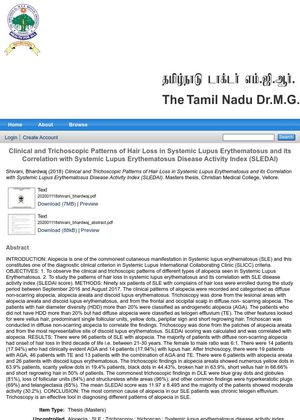Clinical and Trichoscopic Patterns of Hair Loss in Systemic Lupus Erythematosus and Its Correlation with Systemic Lupus Erythematosus Disease Activity Index
May 2018

TLDR Hair loss in SLE patients is mostly due to chronic telogen effluvium and is linked to moderate disease activity.
In 2018, Shivani Bhardwaj conducted a study involving 96 patients with Systemic Lupus Erythematosus (SLE) who were experiencing hair loss. The study, which took place from September 2016 to August 2017, aimed to observe the clinical and trichoscopic patterns of different types of alopecia in SLE and its correlation with the SLE disease activity index (SLEDAI score). The results showed that the most common cause of alopecia in SLE patients was chronic telogen effluvium. Trichoscopy was found to be an effective tool in diagnosing different patterns of alopecia in SLE. The majority of patients with diffuse non-scarring alopecia had onset of hair loss in their third decade of life, between 21-30 years, with a female to male ratio of 6:1. The mean SLEDAI score was 11.97 ± 8.495, with the majority of patients showing moderate activity (30.2%).





